STUDIO VISITS – CHLOE WISE
Chloe Wise is the New York artist capturing a 21st century zeitgeist through dark humor and fake food, dripping alfredo sauce over gluten-free ideas, the artist’s work offers an at-times scathing critique on capitalism that challenges our obsession with health, beauty, and luxury in modern America.
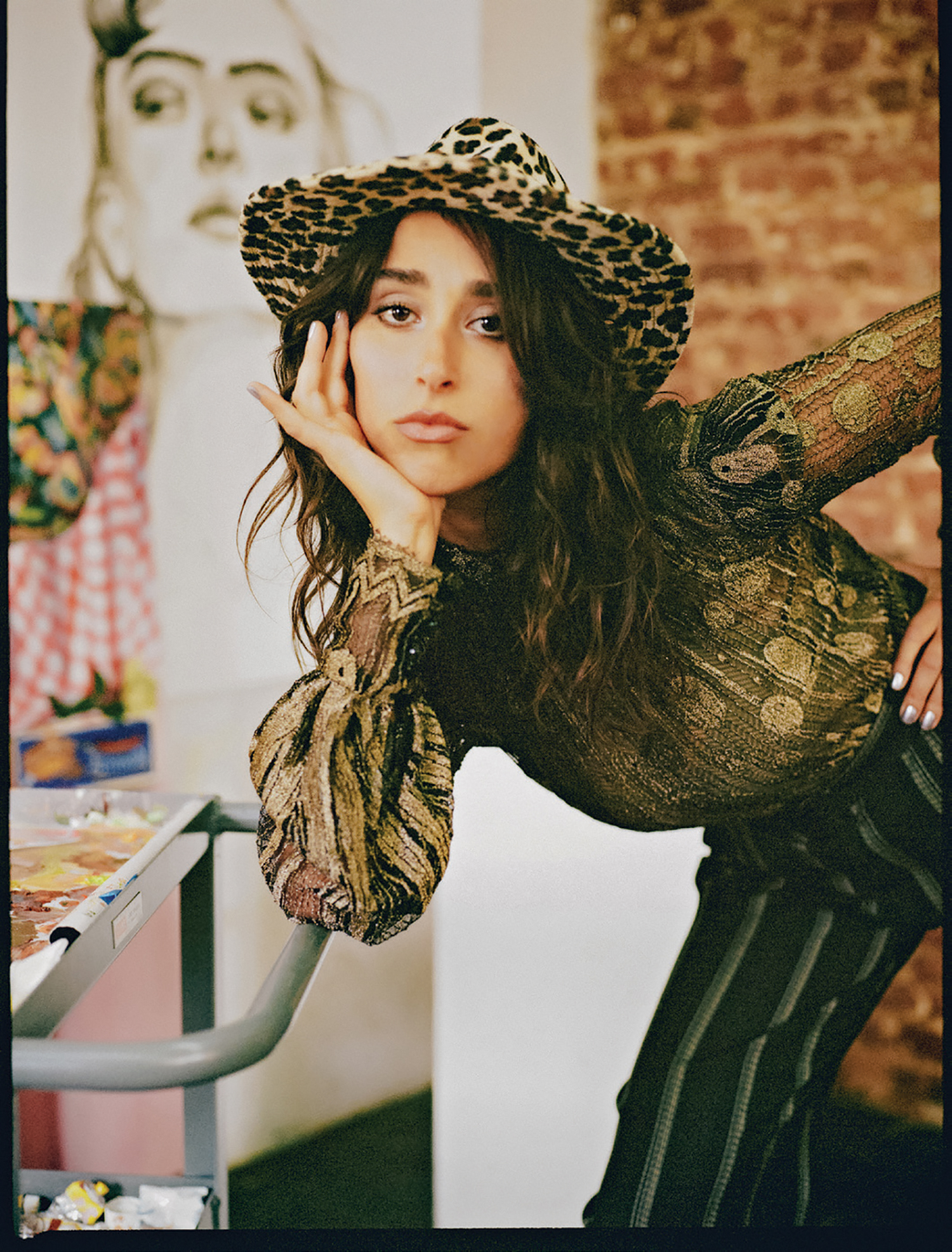
Portrait Photography by Tiffany Nicholson Interview by Ashleigh Kane
Dress (worn as a blouse) by Marc Jacobs, trousers, hat, and shoes artist’s own
“I can’t remember a time where art wasn’t the focus of my life. Even as I’m speaking to you now, I’m drawing. It’s just what my hand is always doing.” Chloe Wise is speaking over the phone from her studio in Alphabet City, New York, reminiscing about growing up in an energetically creative household. The 26-year-old artist recalls being a child and sitting in restaurants with her mom and drawing portraits of one-another on the paper table cloths. Born in Montreal, Canada, Wise says that she’s been making art since she was six or seven-years-old. She laughs when she realizes her style is essentially the same, two decades on. Always encouraged to pursue what she “obviously showed an interest in”, Wise moved to New York in the midst of graduating high school in 2013 and completed the remainder of her classes online. Once there, she began to work as an assistant to Brad Troemel, one of the artists behind the Jogging, a tumblr blog which tapped into the viral possibilities of art on the internet.
In late 2014, friend and fellow artist India Salvör Menuez wore one of Wise’s sculptures to an event – a life-like cream cheese bagel bag adorned with a Chanel logo. The internet went into meltdown. It didn’t take fashion sleuths long to realize that the bag wasn’t from the French fashion house but was instead created by a then-little-known artist named, Chloe Wise. It was her moment, but it’s also a milestone in her career that she doesn’t want to talk about, explaining, “If you want to copy and paste everything I have said before, you have my permission to do that.” But it’s for no reason other than she’d rather tell you about her latest work. Her most recent exhibition was hosted by Paris’s Almine Rech Gallery. Titled Of false beaches and butter money, it was a witty takedown of wellness culture that included oil paintings and sculpture, and contained the elements that have thus far been key to Wise’s success: great aesthetics and even better humour, the latter which she says she uses as an “access point” to draw people in. Come a little closer and you’ll quickly realize that Wise’s work is about more than a punchline, and below she let’s us in on the joke.
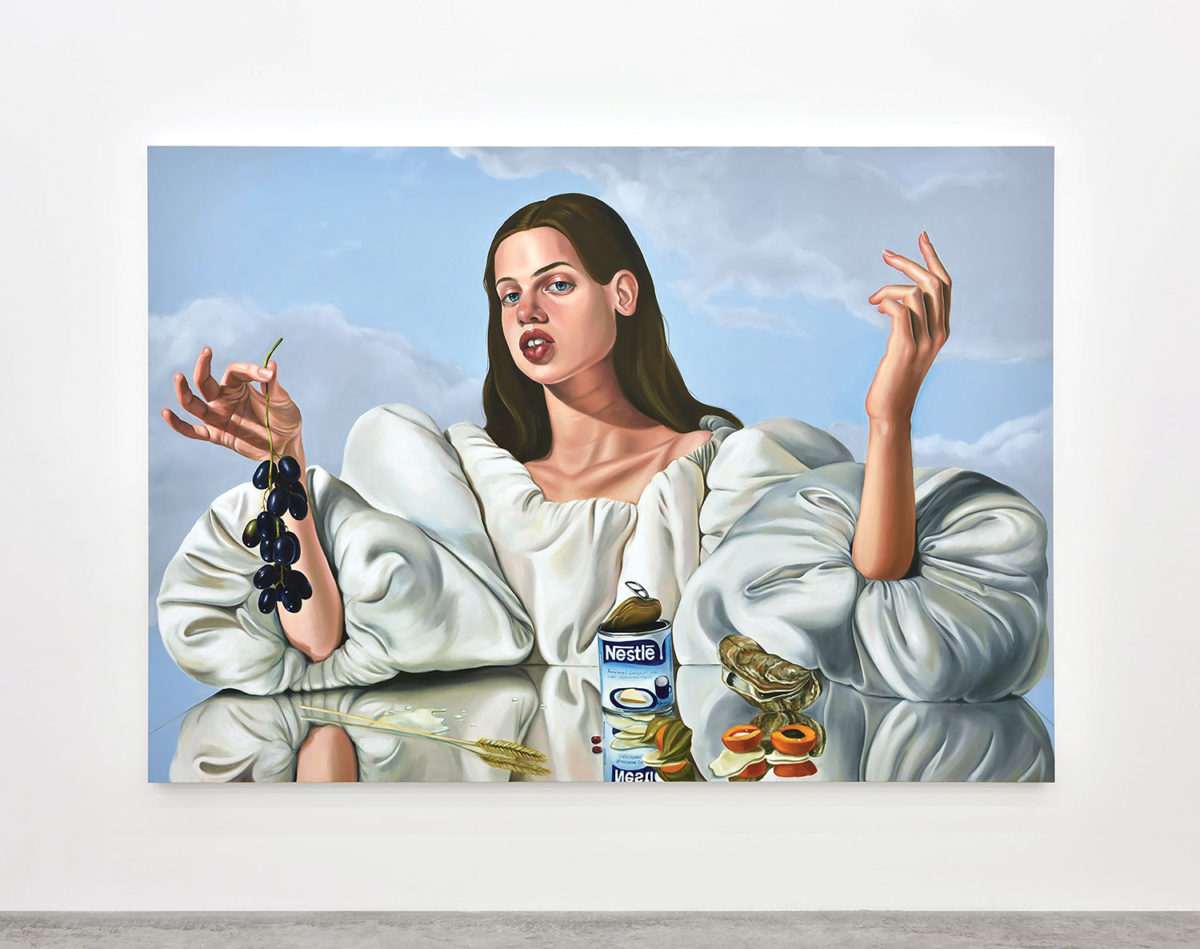
Lactose Tolerance, 2017
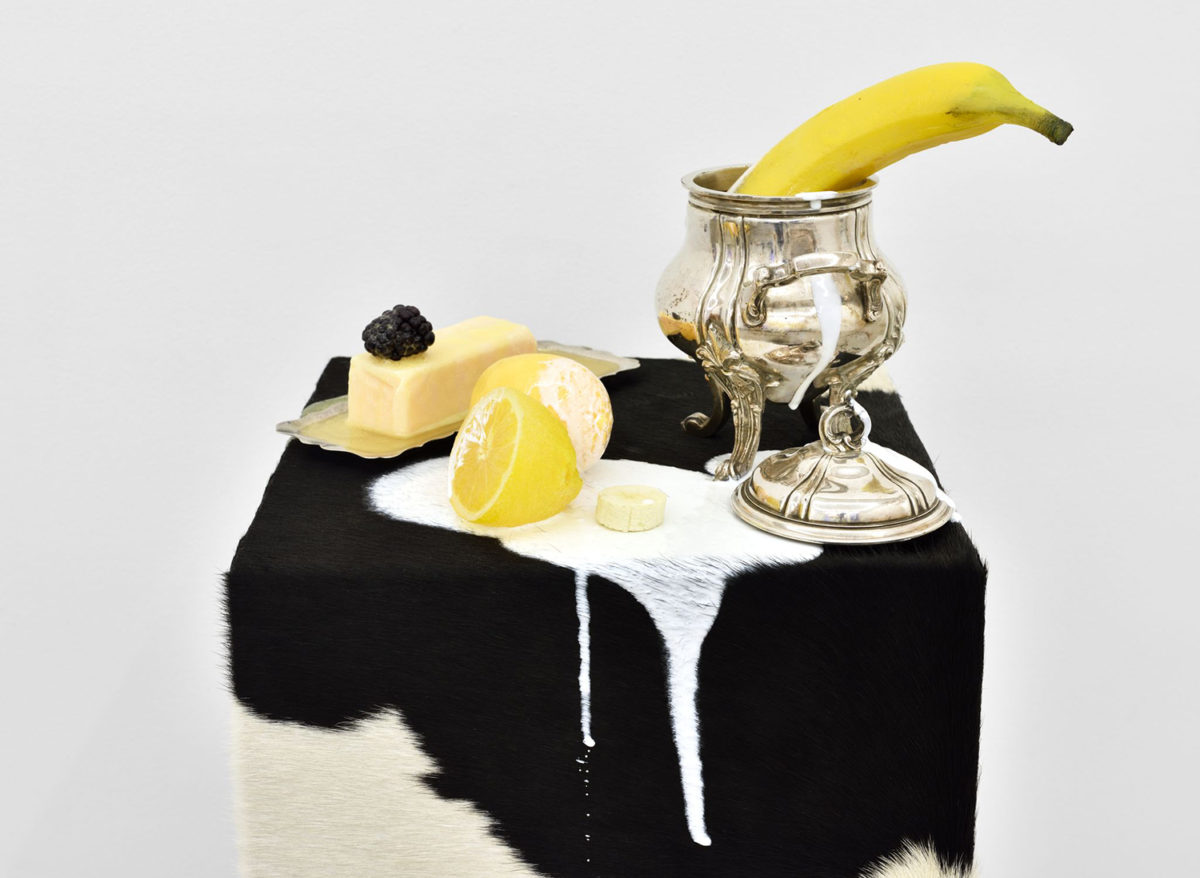
Inceste de Citron, 2017
Can you talk about your first experiences making art?
I was making video art when I was six or seven-years-old. One time I made a fake brand which was a combination of Sprite and some other found liquid in the fridge and I made a commercial for it.
When I was 13, 14, I had a webcam and I would take it off of the computer and bring it with me to school or to Florida. I made this film about lettuce being the essence of beauty which was a parody of Zoolander where water was the essence of wetness. Everyone is just holding pieces of lettuce and it has a Sigur Rós song in the background, but it’s pretty funny. It makes me think I have the same sense of humour now that I had when I was 14.
At the time did you realize that what you were making was art?
It wasn’t so thought out but growing up all my notebooks were always covered in drawings. I was always creating something. I guess I was making work with the tools that were available to me. There was no awareness of what that meant or what it would come to signify. I think it was mostly just a reflex to the muscles that were growing as the internet started to gain popularity.
When do you think you really began to embark on your career as an artist?
I don’t think I knew I was doing that, I was just making stuff. After I started assisting Brad, I began to be in group shows with friends, and that felt like a very natural thing. We were all supporting each other, putting on shows, and working together in whatever capacity. I got offered a solo show, and that’s when I stopped working for other artists and started taking my art seriously as a full-time job. The show was in Montreal and it was called Pissing, shmoozing and looking away (2015). I was also offered another solo show which would exhibit later that year called, That’s something else, my sweet (2015). During the process of making those, the bread bag thing happened. It was like this whirlwind, and from then on it was very clear to me that there would be nothing else except for the continual creation of the things that I felt like I had to make.
Was that sudden glare of a spotlight scary?
No. I’ve never been someone who has been shy, self-conscious, or freaked out about an overwhelming amount of involvement. I am best under pressure, and I’m always under pressure. It was funny, exciting, overwhelming – but in a nice way.
Food has always been present in your work. Why are you drawn to food?
It’s not that I’m drawn to food. Food has always been apart of this conversation with art history, or with us just communicating our Zeitgeist, or our moment in time. Aside from the landscape, it’s one of the most obvious subjects in traditional painting, and I think my work is traditional in that way. Regarding food now, we have such abundance and availability in terms of variation. Walking into a store decades ago would’ve looked a lot different than it does now. There’s this idea around the way that things are marketed to individuals, and how the more that we seek to be individuals, the less we assimilate.
My use of food also talks about other parts of humanity and human experience, such as desire and mortality. The human body comes into this beautiful full form and then it decays and dies, and that’s reality – and that’s the same conversation we can have about food.
Your titles are always brilliant. Tell us about the meaning behind the title of your last show, Of false beaches and butter money?
The ‘false beaches’ part is from Picasso, who, in three different poems he wrote ‘false as a beach’. It kept running through my head, and I realized that this false beach is like a Corona ad; an idyllic paradise image with a blue sky and a yellow umbrella. I was thinking about that falseness and the contrived nature of some utopian ideas and to me, that was a really interesting segue into how my work is about real versus fake. I
t’s a real sculpture, but it also looks like the real thing it’s based on so there is this line between how you even define what real is and what fake is. At what point would the real thing become less valuable? Because the real thing would be a piece of lettuce or something.
The other half, ‘butter money’, is a french idiom that goes, ‘Vouloir le beurre, l’argent du beurre et le cul de la crémière’, which means, ‘you want the butter, the butter money and the milk maid’s ass’. It has the same meaning as ‘you want to have your cake and eat it too.’ It’s about this human desire to be doing the right thing, even though we are just truly ruining the entire planet.
For example, you think that choosing quinoa is the healthy choice, but quinoa completely deforests South America, and is making it completely unsustainable for anybody living there to even come close to meeting their needs. They can’t even eat their own quinoa because they can’t even afford their own quinoa because you’ve priced them out. There’s no real right thing to do, so we’re constantly settling for what we think is an okay decision in a vast array of bad decisions.
There’s no real moral thing and if we spiral too deep into that then we realize everything sucks. It’s hard to not partake in a Capitalist society because we all have a part in it. As humans, we are flawed and we are critical of our decision making processes, and that’s what my show is really about. The ‘want to have your cake and eat it too’ idea is a very distilled version of this desire that we have to be congratulated, or at least to be excused from the conversation because we did our part and now we can stop trying.
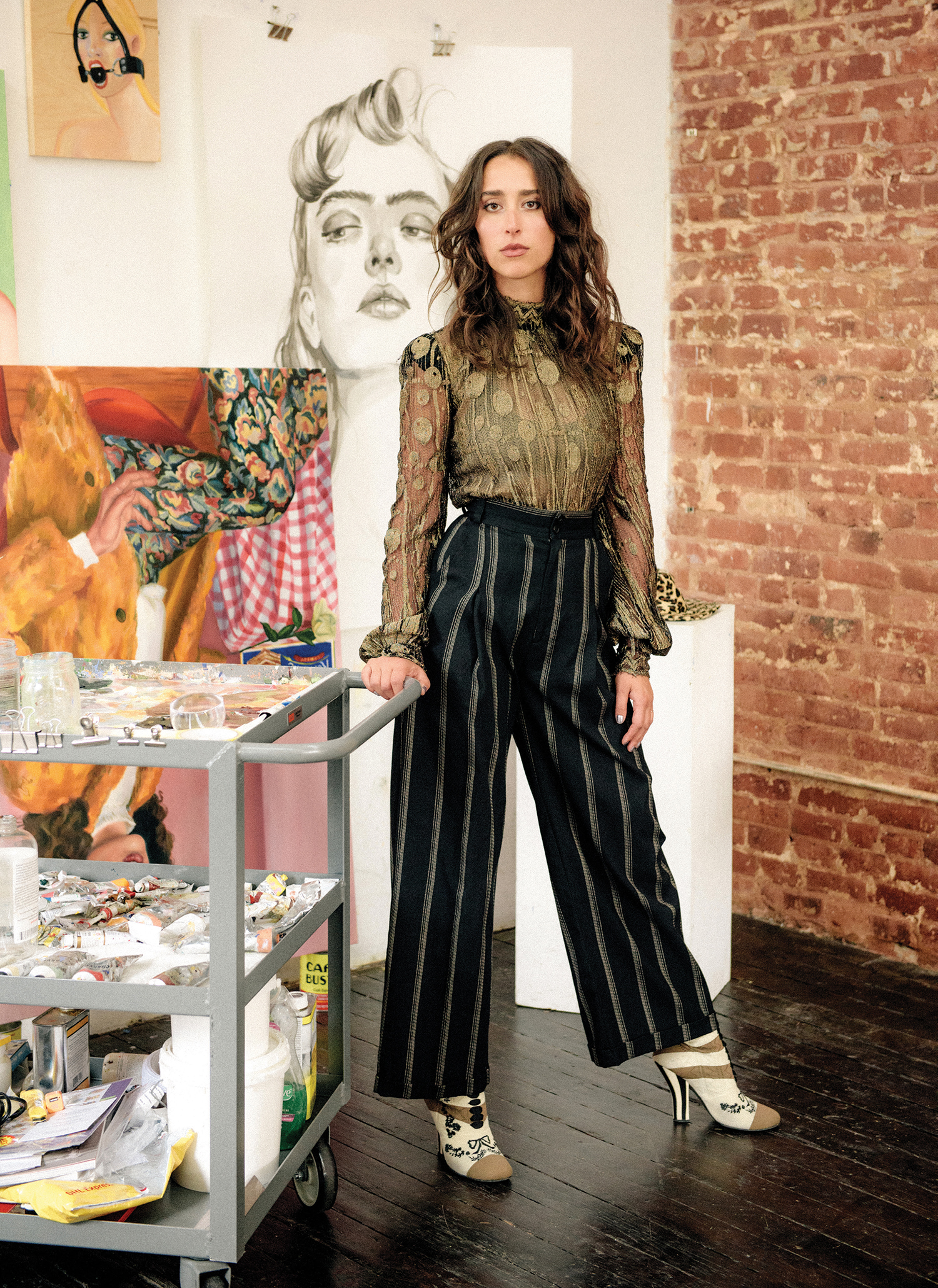
Dress (worn as a blouse) by Marc Jacobs, trousers and shoes artist’s own
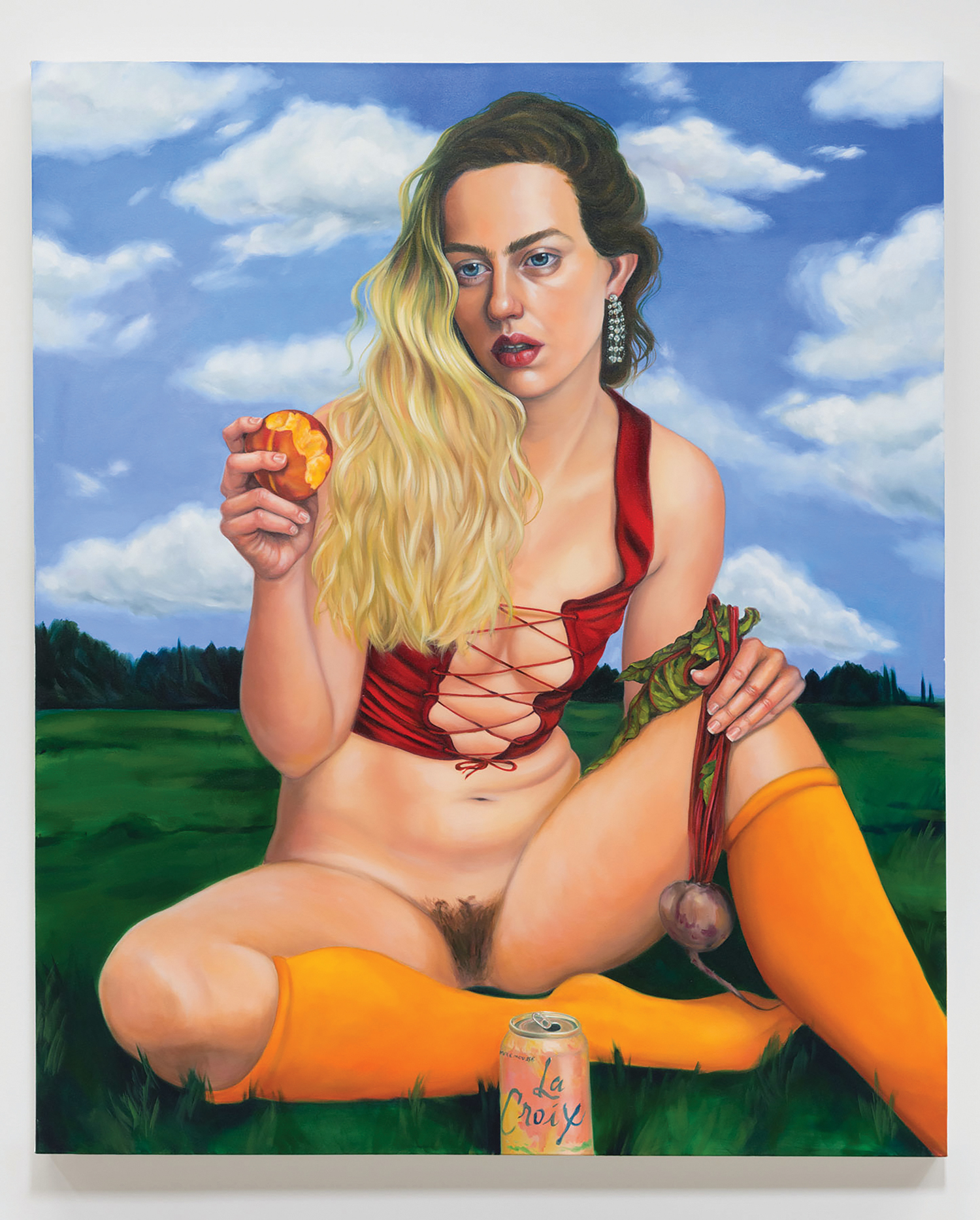
You would have been a castle for a moment, 2016
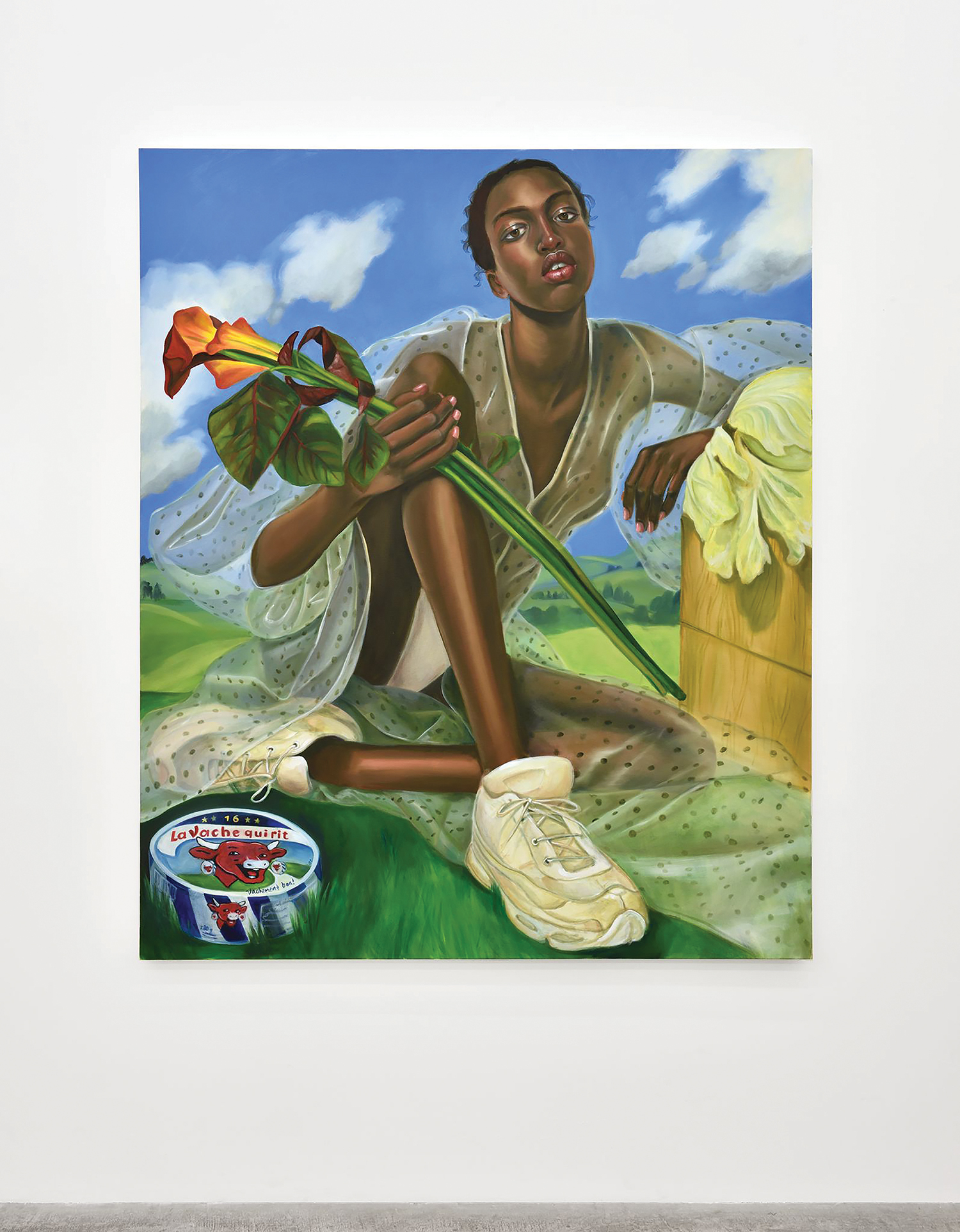
You’ll Go Blind Looking For It, 2017
Your works over the years have explored different issues and politics, have the issues you explore over the years changed?
I think everyone has become a lot more politicized in the sense that it’s become urgent, and it’s not a luxury anymore. Politics is something that we have to speak about. The difference between my politics then and now is my sense of responsibility, because I have a bigger platform. I’m not perfect; I don’t understand exactly what needs to be done or how I will go forward. I’m inconsistent like every human is, but I think that’s what all my art is about; human inconsistency. But I’m figuring it out and learning to share. It’s very natural for me to share what I’m thinking about.
The content of my work is the same, I’m just thinking of other ways of being critical of consumerism and capitalism. As well as trying to exist within it, and benefit from it. Then realising at the same time, that benefiting from it is a problem. So it’s this weird place that we’re in as consumers. As Americans, every single thing that we do is utilised for the benefit of the big brands. Every single thing we do is “Big-Brothered”, in a sense.
There’s something cynical about thinking about this and there is also something very important in acknowledging it. I was acknowledging that on a smaller scale at different times in my life; when I was vegetarian, or when I was making the tampons (Irregular Tampons, 2014). It’s always been the same voice, it’s just a matter of how and what is coming to the table.
You’ve worked widely across various mediums, do you find yourself gravitating towards one in particular now?
It’s just based on what I have to do at a certain time. I like to construct because I’m so all over the place and multifaceted that I need something to give me direction. The mediums are all interconnected and they all inform each other, but painting seems to have a lot of commercial demand, so that’s something I’m focusing on.
Can you talk about the way you use humor? On first glance, people might think of your works as ‘funny’ but looking deeper and hearing you speak about them, it’s clear that they are not just ‘funny’.
I think you can say that they’re funny because when it comes down to the obviously dark and depressing aspects of the works, I don’t think that is what you read when you first see them. It would be cool if it was but then maybe the work wouldn’t have the same impact. I think that satire and comedy have long been the way that we can negotiate, unpack, and work through life’s most unfunny cruelties. That’s how we handle getting through this conversation without dying of a broken heart. That’s part of the human need to create art in general – or create anything – by re-negotiating it, or re-representing it in a way that could be funny, beautiful, moving or sad. Being ‘too real’ doesn’t necessarily get the job done, so I think calling it funny is not a disservice. Humour is my cheap trick and I use it as an access point, but it would not be the final destination.
What advice would you give to someone who needed it?
Don’t question yourself.
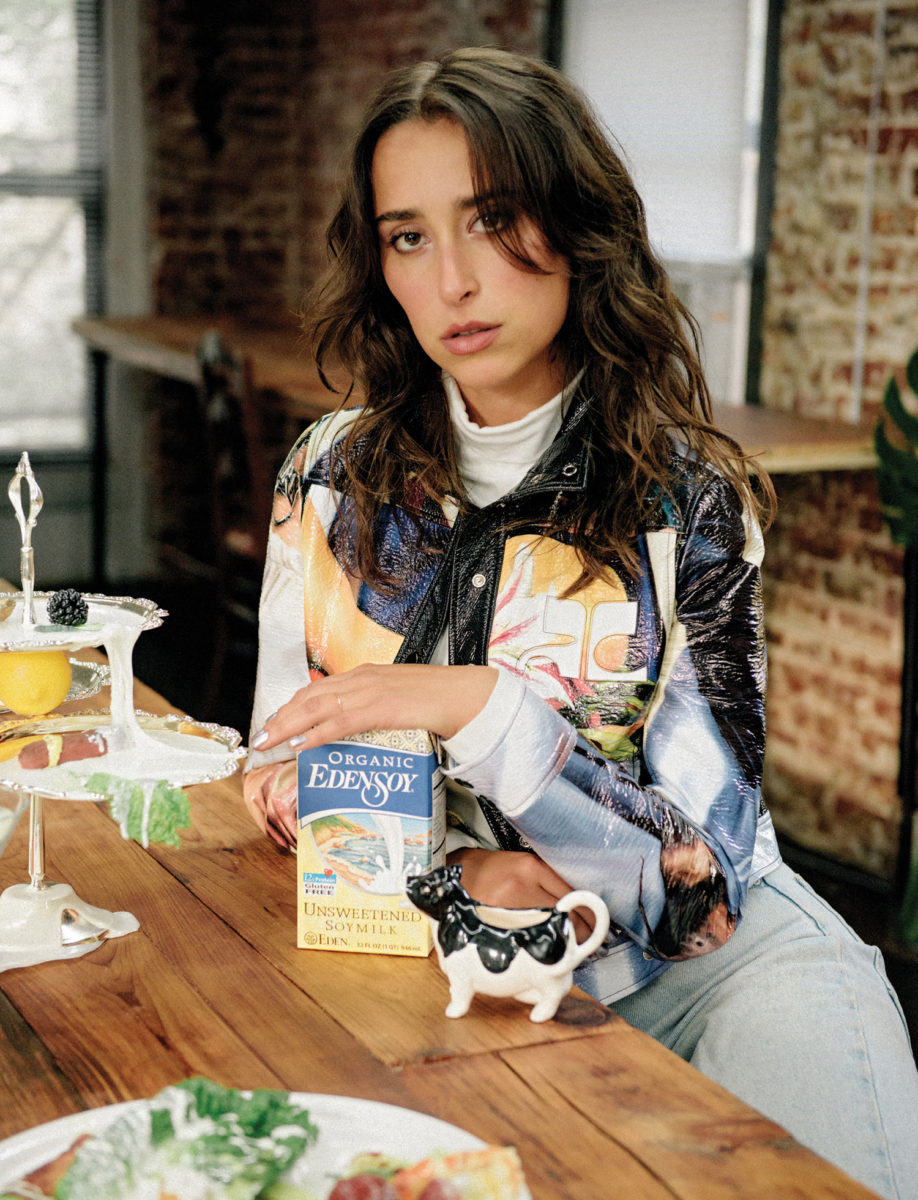
Hair by Austin Burns using Oribe, Makeup by Tonya Riner using NARS cosmetics, Art Direction by Louis Liu, Editor Marc Sifuentes, Production by Benjamin Price.
All Artwork © Chloe Wise / Photo Rebecca Fanuele / Courtesy Chloe Wise and Almine Rech Gallery
For more information visit chloewise.com
